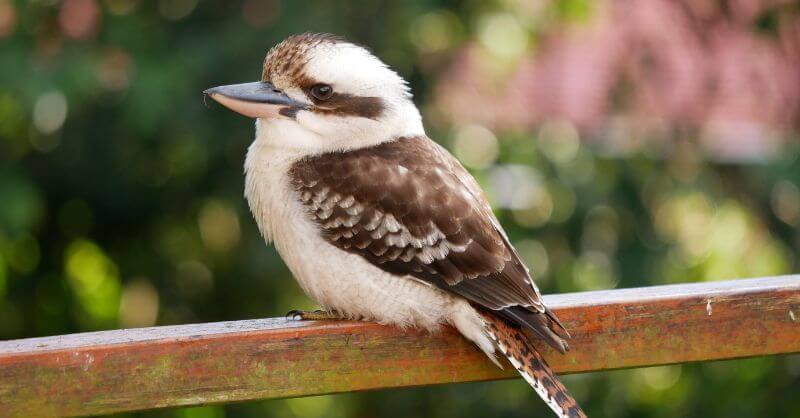Rainy weather can be a challenging time for birds and their nests.
Birds are delicate creatures, and their nests are even more so. Rain can be a major threat to bird nests, as it can soak the eggs and chicks, making them cold and vulnerable. In some cases, rain can even wash the nest away entirely.
To protect bird nests from rain, position them under sheltered areas, like branches with dense foliage, and choose waterproof materials during nest building. This provides essential protection for the nest and ensures the well-being of the avian inhabitants.
In this article, we will discuss effective methods and practical tips to ensure the safety and well-being of these precious avian homes.
How to Protect Bird’s Nests from Rain
Here are a few tips on how to protect bird’s nests from rain:
- Choose a sheltered location for the nest box. When putting up a nest box, choose a location that is sheltered from the wind and rain. This could be under an eave or overhang, or in a dense tree.
- Provide a roof for the nest box. A roof will help to keep the rain out of the nest box and protect the eggs and chicks. Make sure the roof extends at least a few inches beyond the edge of the box to provide adequate coverage.
- Fill the nest box with nesting material. Nesting material, such as leaves, twigs, and moss, will help to insulate the nest and keep the eggs and chicks warm.
- Monitor the nest box during heavy rain. If you see that the nest box is getting wet, you may need to take additional steps to protect it. This could include covering the nest box with a tarp or plastic sheet.
- Avoid disturbing the nest. Once the birds have laid their eggs, it is important to avoid disturbing the nest. This can stress the birds and make them more likely to abandon the nest.

Choosing the Right Nesting Site
Sheltered Locations:
- Under Eaves or Overhangs: These provide excellent protection from rain and wind.
- Dense Trees: The foliage creates a natural canopy, shielding the nest from harsh weather.
- Shrubs and Bushes: Offer a combination of shelter and concealment.
- Natural Cavities: Rock crevices or hollowed-out tree trunks provide secure nesting sites.
Natural Cover:
- Dense Branches: Overhead branches offer protection from direct rainfall.
- Leaves and Moss: These materials insulate the nest and retain heat.
- Vine Cover: Vines can act as a natural shield, deflecting raindrops.
Birds Nesting Material Selection
Waterproof Materials:
- Dried Grass: Water-resistant and readily available.
- Pine Needles: Their waxy coating repels water.
- Feathers: Provide insulation and water resistance.
- Bark Strips: Offer a durable, waterproof layer.
- Moss: Absorbs moisture and helps regulate nest humidity.
Water-Repellent Properties:
- Dried Grass: The silica content in dried grass makes it naturally water-resistant.
- Pine Needles: The waxy coating on pine needles repels water droplets.
- Feathers: The oily coating on feathers provides waterproofing.
- Bark Strips: The dense bark structure resists water penetration.
- Moss: The capillary action of moss helps absorb and distribute moisture.
Strategic Nest Placement
Minimizing Rain Exposure:
- Orient Nest Entrance: Position the nest entrance away from prevailing winds and rain.
- Choose Elevated Locations: Higher nesting sites reduce the risk of flooding.
- Avoid Low-Hanging Branches: Droplets from overhanging branches can reach the nest.
- Consider Roof Protection: Overhanging structures or natural shelters can provide additional protection.
Bird Species and Nesting Habits:
- Cavity Nesters: Choose sheltered locations within tree cavities or nest boxes.
- Open-Cup Nesters: Select sites with dense foliage or under natural overhangs.
- Ground Nesters: Consider using nesting boxes or creating elevated platforms.

DIY Solutions for Nest Protection
Enhancing Nest Waterproofing:
- Add a Roof Extension: Extend the nest box roof to provide more coverage.
- Line the Nest with Waterproof Materials: Use materials like dried grass, bark strips, or moss.
- Create a Water Diversion: Divert rainwater away from the nest using branches or other materials.
Human Intervention:
- Monitor Nest Conditions: Check nests regularly, especially during heavy rain.
- Provide Temporary Shelter: Use a tarp or plastic sheet to protect the nest during storms.
- Relocate Nests if Necessary: Carefully move nests to a safer location if they become wet or damaged.
Conclusion
Protecting bird’s nests from rain is a responsibility we should all embrace. By implementing the strategies discussed in this article, we can make a significant difference in safeguarding these delicate homes. Let us strive to create an environment where birds can thrive, nurturing future generations and preserving the beauty of our natural world.
FAQ
Can I touch or move a bird’s nest if it gets wet?
No, it is best to avoid touching or moving bird’s nests as this can cause stress or abandonment. It is essential to respect their space and allow them to take care of their nests.
Are there any specific waterproofing products for bird nests?
There are waterproofing solutions available that are safe for birds. Consult with local wildlife experts or ornithologists to find suitable products for protecting bird nests from rain.
How can I create artificial covers for open bird nests?
You can construct small canopies using lightweight and weather-resistant materials to protect open bird nests from rain. Ensure these covers do not disrupt the birds’ access or ventilation.

I am a writer and blogger who is passionate about birds. I write to inspire and educate others about the beauty and importance of avian species in our ecosystem. I love to watch birds flying and taking their photographs to capture those memories.

